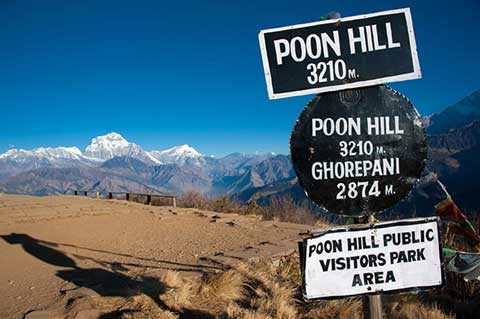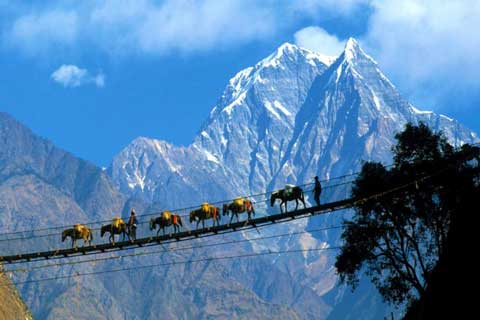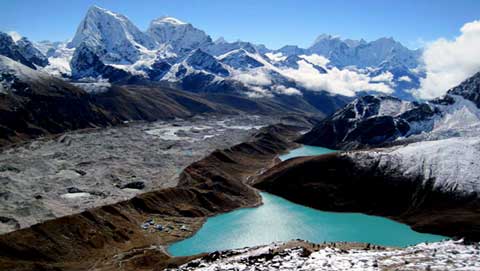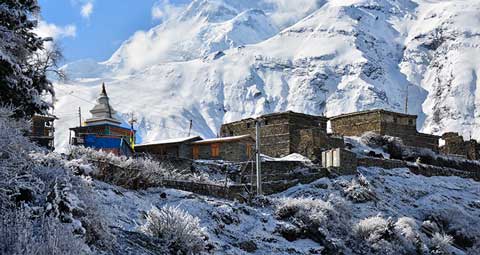Nepal
Nepal is popularly symbolized across the globe, by the highest mountain in the world; Mount Everest. This small South Asian country is home to the world’s highest snowy mountains and an array of ethnic groups with vibrant cultures, religions, ancient history and languages. Nepal, a landlocked nation, situated between India and China, is one of a few countries in the world where such immense climatic and topographic diversity features so dramatically and is crammed into such a small geographical area.
Nepal is also rich in biological diversity and is home to a wide variety of flora, fauna and wildlife. Rich culture, art and history attract visitors each year, where they can see various religions coexisting harmoniously among the multitude of ethnic groups that form the people of Nepal.
The birth place of The Lord Buddha, holy Hindu sites, beautiful temples, stupas, mosques and churches, a number UNESCO heritage sites and the most mesmerizing scenery you could ever feast your eyes on, all bring people flocking to the warm and welcoming republic of Nepal.

History Of Nepal
The name "Nepal" is first recorded in texts from the Vedic period of the Indian subcontinent, the era in ancient India when Hinduism was founded, the predominant religion of the country. In the middle of the first millennium BCE, Gautama Buddha, the founder of Buddhism, was born in Lumbini in southern Nepal. Parts of northern Nepal were intertwined with the culture of Tibet. The centrally located Kathmandu Valley is intertwined with the culture of Indo-Aryans, and was the seat of the prosperous Newar confederacy known as Nepal Mandala. The Himalayan branch of the ancient Silk Road was dominated by the valley's traders. The cosmopolitan region developed distinct traditional art and architecture. By the 18th century, the Gorkha Kingdom achieved the unification of Nepal. The Shah dynasty established the Kingdom of Nepal and later formed an alliance with the British Empire, under its Rajput Rana dynasty of premiers. The country was never colonized but served as a buffer state between Imperial China and British India. Parliamentary democracy was introduced in 1951, but was twice suspended by Nepalese monarchs, in 1960 and 2005. The Nepalese Civil War in the 1990s and early 2000s resulted in the proclamation of a secular republic in 2008, ending the world's last Hindu monarchy.
The Constitution of Nepal, adopted in 2015, affirms Nepal as a secular federal parliamentary republic divided into seven provinces. Nepal was admitted to the United Nations in 1955, and friendship treaties were signed with India in 1950 and the People's Republic of China in 1960. Nepal hosts the permanent secretariat of the South Asian Association for Regional Cooperation (SAARC), of which it is a founding member. Nepal is also a member of the Non Aligned Movement and the Bay of Bengal Initiative. The military of Nepal is the fifth largest in South Asia, it is notable for its Gurkha history, particularly during the world wars, and has been a significant contributor to United Nations peacekeeping operations.
Sherpa Recommended 6 Best Trekking in Nepal.
 EVEREST BASE CAMP TREK
EVEREST BASE CAMP TREK
One of the best treks in Nepal. Join our 16 days tour to experience the trip of a lifetime.
 POON HILL TREK
POON HILL TREK
Perfect trek for those who have limited time in Nepal and are looking for relatively easy trek.
 TAMANG HERITAGE HOMESTAY TREK
TAMANG HERITAGE HOMESTAY TREK
We put together this itinerary for those who loves local culture, tradition and enjoy meeting locals.
 MANASLU CIRCUIT TREK
MANASLU CIRCUIT TREK
This high altitude adventure is a perfect trip for all thrill seekers and adventurers alike.
 GOKYO LAKE TREK
GOKYO LAKE TREK
An amazing route in a beautiful region where the hustle and bustle of modern society is nowhere to be seen.
 Senchal LakeNAR PHU VALLEY TREK
Senchal LakeNAR PHU VALLEY TREK
Nar Phu valley is a remarkable, remote, untouched area of Nepal, this route certainly takes you off the beaten track and away from the tourists tackling the more popular trails.